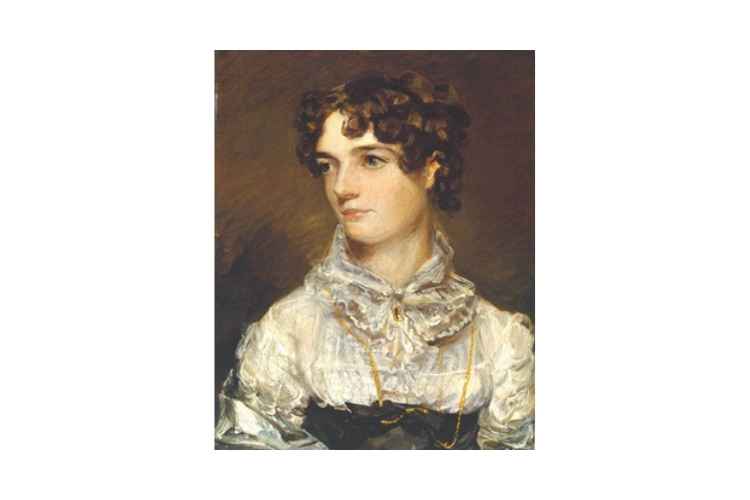John Constable is now known as one of the greatest painters in the history of England. Although, back then, John had a life full of struggles because his artworks did not do well at the professional forefront. Because of this, his marriage with Maria also suffered.
But history always remembers the great, and so is John Constable, still an extraordinary artist of all generations. John Constable’s paintings still captivate the eye of the beholder, and whenever there lies a statement piece of Constable, you will always find a troop of people around it.
There are a lot of artworks by John Constable that is spread worldwide, and people across the globe especially visit museums, art galleries, and exhibitions to admire his work. Learn more about painter John Constable and see where an art enthusiast like you can find drawings of Constable.
Portrait of Maria Bicknell, 1816
After the success of Wivenhoe Park in the year 1816, the upcoming year of 1817 proved to be very important for him. It bought so many other artworks and commissioned works for the constable artist. This led to him having more money to utilize in his long-awaited marriage with Maria Bicknell. However, he had a significant amount already collected after the inheritance that came after his father’s death in 1816.
Painter John Constable had known Maria Bicknell since 1800, and they had been in a courtship since 1809. Only Maria’s family raised issues, especially her grandfather, to approve of the couple’s romance. During this time, John Constable went out of the box and painted a portrait other than those generic landscapes.
This very portrait by Constable was a fragile work of warmth and compassion as it was dedicated to his beautiful wife, Maria Bicknell. Also, whenever John painted women subjects, there has always been a sense of tenderness that completes the artwork. The charismatic portrait is presently kept in the Tate British Collection.
The Hay Wain, 1821
Perhaps the most famous English landscape painting is The Hay Wain by John Constable, painted in 1821. It is now one of the top-rated attractions at the National Art Gallery in London. Art enthusiasts and people from all over the world cite this as a lucrative visual point.
But, the painting carries an unbelievable irony with itself. In 1821, when this painting was exhibited at the Royal Academy, it failed to find a buyer and was feted not in Britain but France. Nevertheless, it won the gold medal there from Charles X after its successful exhibition at Paris Salon in 1824.
The painting depicts a wain with an old name for a wagon crossing the Stour. There are workers preparing hay in the distant meadows and a cottage on the left side of Willy Lott, which can be found today in the exact situation. It seems just like what Constable has painted in its portrait of Hay Wain.
Salisbury Cathedral From The Bishop’s Ground, 1823
John Constable and John Fisher met each other in the year 1798, and this was the beginning of a great union between the two. John Fisher became the Bishop of Salisbury in 1807, where he worked on the iconic and the great medieval Cathedral.
Fisher commissioned a piece of art from Constable’s collection in 1822. The painter visioned the Cathedral from the Bishop’s grounds which beautifully illustrated Fisher and his wife gazing at the Cathedral from the left corner of the artwork. This painting was highly challenging because of its intricate gothic styles and elusive depiction of the Cathedral.
However, John Constable, with his deep sense of knowledge and expertise, made the foreground more appealing than it looks in reality. Framing through the trees, the water meadow flowing, and castles grazing is a visual to cherish through the brushstrokes of Constable.
Today, this portraiture lies in V&A, featuring a slightly dark cloud above the Cathedral that Fisher didn’t like in the first place. That’s why Constable did some re-edits, and this can be seen through the color changes in the rest of the canvas. The sunnier version of this beauty lies in the Frick Collection in New York.
Hadleigh Castle, 1829
The year 1828 was devastating for John, both emotionally and mentally, because the love of her life, Maria, died due to severe illness. After a few months’ gaps, John painted this huge six-footer somber Hadleigh Castle. Then, in 1814, John visited Hadleigh Castle in Essex for the very first time.
From those memories, he sketched the 1829 landscape of the castle. While the castle is no more than a decaying ruin, he depicts a cow herd separated from his beasts and the surreal river of the Thames stretching its limitless boundaries and ending in the sky.
It was a time in his life when Constable himself describes as a man left with nothing. During the same year, he was elected by the Royal Academy. President Sir Thomas Lawrence primarily informed him that out of all the elected artist members. He was given priority because of his highly specialized painting skills in the historical genre. It was this painting that played a significant role too. One can revisit this sheer idiosyncratic artwork at the Yale Centre of British Art.
Conclusion
With so many ups and downs, John Constable stood tall and strong as an artist. Yet, there is much more to learn about John Constable than his artistic talents and John Constable paintings. After his wife, he was the one to raise all his children. Yet, he continued to paint and deliver masterpieces that today uphold great eminence in art history.


